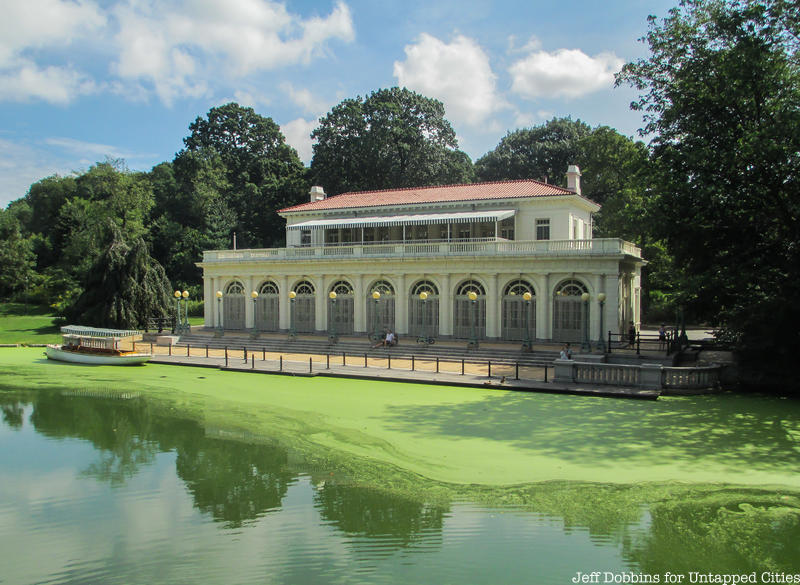3. Secret Tunnels Underground

Olmsted was one of those quintessential creative, explorer types. Turning down admission to Yale, he wandered around the countryside, traveling like a modern-day backpacker. He signed up as a seaman aboard a ship going to China and lived as a farmer for seven years in Connecticut. It was this combination of experiences, particularly the latter, which gave him a keen understanding of the importance of drainage systems in parks.
The system Olmsted designed for Prospect Park was ahead of its time. It used runoff to refill the bodies of water throughout the park rather than adding that water into the municipal sewer system, which was frequently overrun as is. Prospect Park: Olmsted and Vaux’s Brooklyn Masterpiece deems the system “an invisible web” of clay drainpipes that run the length of Long Meadow, connected by smaller pipes and a series of “vaulted retention basins.” Separately, it is said that a tunnel once ran from below the Park Slope Armory into Prospect Park. Inside the armory, a bricked-off entrance to this tunnel is visible. You can feel a breeze from the removed bricks on top of the entranceway. It is believed that large portions of the tunnel collapsed due to the construction of the subway and residential expansion in Park Slope.





